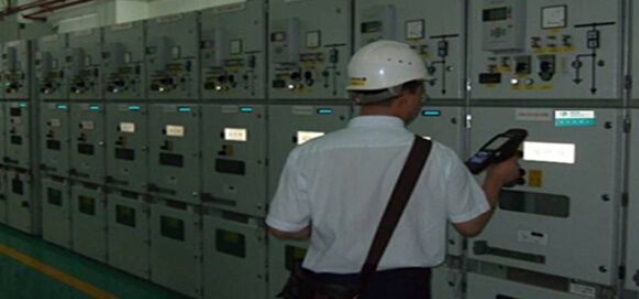 Call at :
+86 18681515767
Call at :
+86 18681515767
 Email :
marketing@jtspeedwork.com
Email :
marketing@jtspeedwork.com
 Call at :
+86 18681515767
Call at :
+86 18681515767
 Email :
marketing@jtspeedwork.com
Email :
marketing@jtspeedwork.com
RFID Power Equipment Inspection Technology Illuminates Millions of Families
With the rapid development of power grid technology, power equipment is the core infrastructure of a city. As an important asset management system, it needs more safe and scientific management. In the process of asset and equipment inspection, it needs to meet the needs of modern data visualization. RFID power equipment inspection technology enables fast and efficient management on the power asset management system. Using FRID's automatic radio frequency identification technology, the extended management greatly saves manpower investment.
The power equipment inspection system is a basic work to effectively ensure the safety of power equipment, improve the reliability of power equipment, and ensure the minimum failure rate of power equipment. At present, the working methods of manual inspection and manual paper media recording are widely used in China. These methods have many defects such as many human factors, high management cost, inability to supervise the work of inspection personnel, and low informationization of the inspection clerk.
The RFID power inspection program introduces the current advanced RFID radio frequency identification technology + GPS (satellite positioning system) + CDMA / GPRS technology, which mainly solves the following three important problems in the equipment inspection work:
1. The inspection is not in place, missed inspection, or Not on time;
2. Manually report the results of the inspection is inefficient, easy to miss or error;
3. It is difficult for management personnel to understand the condition of the line in a timely, accurate and comprehensive manner, and it is difficult to formulate the best maintenance and repair plan.
When the inspection personnel go out for inspection, they can automatically send a message to the center through the handset (every 2 minutes, interval can be set) or manually, report the current position and time of the inspection personnel, and if the fault is found, The fault type, device number, and current handset RFID information are sent to the monitoring center.
The monitoring center receiver receives the reported information and stores it. The system reads the information received by the receiver through the system, decomposes the time, location, device type, and finder of the fault, and automatically stores the data information into the database server and simultaneously publishes it on the Internet.
The monitoring terminal displays the inspection status in real time on the software by means of the RFID system, such as displaying the fault points discovered by the various inspection personnel, the emergency situations of various faults, the processing situation, the current state, the position of each inspection personnel at a certain moment and Patrol route.
The tower is affixed with an RFID tag. The unique identifier of the world allows the inspectors to go to the site in person to obtain the RFID identification code, thus restraining the staff from being inspected. At the same time, first input the relevant data of the latitude and longitude of each base tower of all the lines to be patrolled into the server and the handheld. During the patrol process, the patrolman locates the latitude and longitude of the patrol tower through the GPS global positioning system. Whether it matches the originally entered data, and records the patrol information in the handset, and inputs the recorded information to the server through the CDMA/GPRS network after the patrol is returned, and performs comparative analysis. In this way, abnormal conditions in the line operation can be found in time to be processed in the shortest time, thereby ensuring the safety of the line. Because the data collected in the patrol needs to be input into the server for comparative analysis, it can effectively improve the quality of the line patrol, ensure the occupancy rate of the line patrol personnel, and prevent missed inspection and in place inspection.

The system can also perform statistics, summary and analysis on various historical data stored in the database, and displays the frequency and occurrence of a certain fault in a certain period of time in various charts or reports format for the management personnel to predict and analyze. Strengthen management and formulate response measures to achieve the purpose of ex ante control to reduce the accident rate and ensure the smooth operation of safe and large production.
Power patrol system solution advantages:
1) High weather resistance: able to withstand wind and sun, rain, withstand large temperature changes (usually required -30 ~ 70 ° C), and even able to withstand flooding;
2) Adaptability: automatic identification can be read under harsh weather conditions; automatic identification reading is not affected by substation environment;
3) Strong anti-counterfeiting ability: the logo cannot be copied and counterfeited to avoid the occurrence of human cheating;
4) Convenient installation: It can be directly buried on the cement base, the installation equipment is simple, and the process is simple;
5) Strong anti-destructive ability: able to resist general human damage; prevent malicious damage to children or livestock;
6) Long service life: the service life is more than 10 years;
7) Convenient operation and maintenance: maintenance-free, reducing management costs;
RFID radio frequency identification technology manages power assets to realize automatic operation of asset information identification, asset classification, automation/semi-automatic inventory, accurate asset location, automatic report output and other related operations.
Categories
New Blog
Copyright © 2025 Shenzhen Jietong Technology Co.,Ltd. All Rights Reserved.

IPv6 network supported